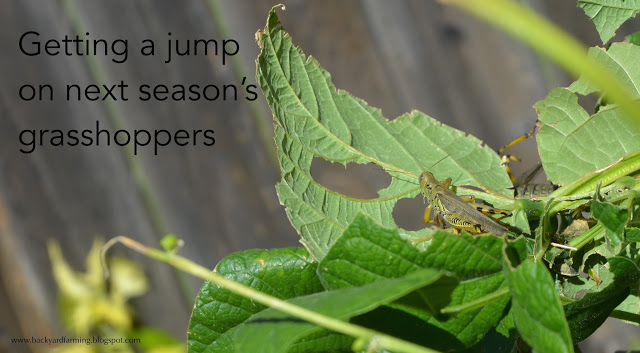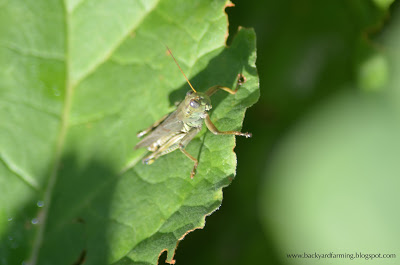

| Online: | |
| Visits: | |
| Stories: |
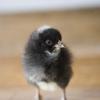
| Story Views | |
| Now: | |
| Last Hour: | |
| Last 24 Hours: | |
| Total: | |
Getting a jump on next summer's grasshoppers
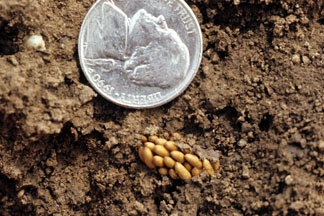 |
| Cluster of grasshopper eggs. Photo courtesy of CSU Extension, by permission. |
“Don't count your eggs before they hatch” is sound advice for opportunity seekers. When it comes to pest control in your backyard farm, minimize opportunistic grasshoppers by destroying eggs before they hatch.
Keep an eye out for egg clusters as you dig in your garden this spring. The eggs look like grains of brown rice stuck together.
If you find such a stash, take the time to put it in an airtight container that you later discard. If you leave them be, these eggs can hatch into the garden's most ravaging enemies. According to Planet Natural, a study showed that six adults per square yard on a 10-acre pasture ate as much as a cow.
Because of grasshoppers' mobility, they are extremely hard to control. Strong pesticide sprays will harm bees and other beneficial insects. Natural baits are available, such as those containing Nosema Locustae. Grasshoppers get a spore from ingesting the substance (most types: a powder), eat less and die. Cannibal grasshoppers will get sick, too. To be effective the bait must be applied to known hatching areas when the grasshoppers are nymphs.
Destroying the eggs you find is a no-cost companion approach to any baits you may try.
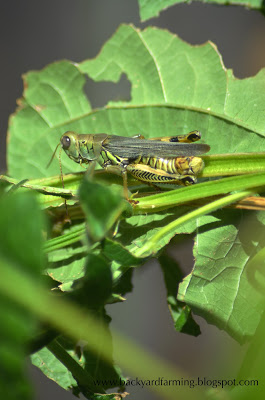 Female grasshoppers lay the eggs about an inch underground in late spring/early fall. The eggs hatch in mid to late spring and look for tender foliage. Remove any unwanted plants and cultivate around the ones you keep to turn the soil and expose egg clusters.
Female grasshoppers lay the eggs about an inch underground in late spring/early fall. The eggs hatch in mid to late spring and look for tender foliage. Remove any unwanted plants and cultivate around the ones you keep to turn the soil and expose egg clusters.Source: http://backyardfarming.blogspot.com/2016/04/getting-jump-on-next-summers.html



